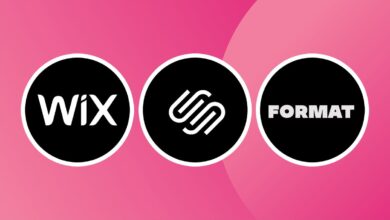Top 35+ UI Developer Interview Questions and Answers

While it may be a stretch to call any IT career recession-proof, there is little doubt that the digital age has created and sustained enormous demands for professionals in a wide range of disciplines and skillsets.
It’s a job-seekers’ market for many IT occupations, but even so, it’s essential to make sure that you make the best first impression during an interview. After all, you not only need to impress the interviewer with your knowledge, you also need to show why you’re apart from the pack in a class by yourself. Considering enrolling in a UI UX design course can significantly enhance your skill set and set you apart in the competitive job market.
Brushing up on the questions you’ll most likely get during a job interview is excellent preparation. Bear in mind; this isn’t a replacement for knowing the material; it’s a refresher, something meant to fill in small gaps in your memory. Even if you’re already in a user interface (UI) position, there may be some upskilling in your future. These questions, taken in conjunction with some refresher courses, are a valuable tool that can help facilitate the whole upskilling experience.
Below are two dozen interview questions and answers that may be asked of UI developer job candidates. UI developers are the third most in-demand professionals today in the IT industry. Well-designed UI is essential to the success of new software applications.
We’ll start with basic questions and work up to the more complex ideas. Let’s go.
Basic Questions
1. What exactly is the role of a UI developer?
The best way to answer this is to define what a user interface is. UI is every detail that users can control or interact with (keyboard, mouse, touchscreen, other controllers, etc.) across different devices such as smartphones, desktop computers, laptops, tablets, and other mobile technology. The UI developer’s role is to create the best, most convenient interface that meets the users’ needs, such as ease of use, accessibility, and aesthetics.
2. What’s the difference between a UI developer and a UX developer?
Although these disciplines often overlap, a UI developer is responsible for designing the visual, interactive elements, something that helps users navigate their way through the product. A user experience (UX) developer creates and improves the quality of a user’s interaction with both the company and its product. If UI and UX were part of the human body, UI would be the skin and appearance, while UX would be the internal organs.
In summary, a product that looks nice but doesn’t work well has useful UI and bad UX. If the product works great but is an eyesore, it has superior UX but inferior UI.
3. What’s the difference between a UI developer and a front-end developer?
Front-end developers create the client-side of a web interface, making sure it functions properly, such as making sure all of the website’s elements work. The UI developer makes everything on the site is user-friendly and looks good.
4. What kind of skills do you think are crucial for a successful UI developer?
UI developers must have skills in visual design (including animation and interactive elements), prototyping platforms, copywriting, SEO, site analytics, and front-end frameworks. A good UI developer knows HTML, CSS, and—though it’s not mandatory—Photoshop.
5. Name three ways to reduce a page’s load time.
Eliminate unnecessary widgets, minimize redirects, and reduce image sizes.
6. What is HTML?
HTML is the most popular language for creating websites, as well as any elements viewed in a web browser. It stands for HyperText Markup Language.
7. What is Semantic HTML?
Also known as semantic markup, it’s HTML that uses tags to embody what the text is trying to convey. In other words, it brings meaning and a presentation to a webpage.
8. Name at least three position property attributes.
Property attributes include absolute, fixed, inherit, relative, and static.
9. How do you optimize a website’s assets?
Optimizing assets on a website are essential to providing an enjoyable user experience. The goal is to reduce the overall page size and loading time, thereby improving performance and increasing the number of visitors. Users can quickly and easily access content by compressing files, combining scripts, lazy loading images, and utilizing tools such as minification.
10. What things must you be wary of when designing or developing multilingual sites?
Designing multilingual sites can be a challenging endeavor. It requires knowing how to determine which language to use, structure the content for multiple languages, and ensure that the translated content is accurate and consistent.
11. What is the difference between HTML elements and tags?
HTML elements are the basic building blocks of websites. They are “containers” that contain content and provide structure for websites. They can also be nested within each other to create more complex content. HTML tags are the instructions that tell a browser how to display the HTML elements.
12. What does DOCTYPE mean?
DOCTYPE is an acronym for “Document Type Definition.” This HTML language element defines the type of document used for a web page, and it comprises two parts: the document type name and the public identifier.
13. What’s the difference between standards mode and quirks mode?
Standards mode and quirks mode are two different ways web browsers render HTML documents. Standards mode is a way for the browser to interpret a website’s HTML code according to the most recent standards, while quirks mode is used to crack older HTML code. Quirks mode is a less strict interpretation of webpages, while standards mode is much more used since it applies the most recent rules of HTML. In standards mode, the browser will ignore any HTML or CSS code that is not up to the highest standards.
14. What are the limitations when serving XHTML pages?
Serving XHTML pages can have limitations as all web browsers do not natively support it. For maximum compatibility, web developers must ensure that their web pages are compatible with the most popular web browsers, such as Chrome and Firefox.
15. How do you make comments without text being picked up by the browser?
The standards established by the World Wide Web Consortium. One way to ensure that the browser does not interpret a specific part of a web page is to use comment tags.
16. What is the difference between linking to an image, a website, and an email address?
Linking is one of the easiest ways of connecting to different websites or sources of information. When you link to an image, you direct the user toward a specific photo or picture elsewhere. Linking to a website is similar, but it can be an entire page or website instead of just a single image. Lastly, linking to an email address is done when you want the user directed toward a specific email address.
17. What is the syntax difference between a bulleted list and a numbered list?
The syntax for a bulleted list is typically denoted with a hyphen (-) or an asterisk (*) before the listed item. A numbered list is indicated by numbers (1, 2, 3, etc.) for each item. For example, a bulleted list might look like this: -Item 1 -Item 2 -Item 3, While a numbered list might look like this: 1.
Frontend Developers Interview Questions
18. What is meant by a responsive website?
A website is considered “responsive” if it automatically adjusts to the device size and type of the user. This means that the same website can display correctly on a laptop, tablet, or phone, no matter the device’s size or orientation. This adaptability makes it easy for users to access and navigate a website, regardless of their device.
19. Explain the difference between inline, inline-block, and block.
Inline elements are displayed inline, meaning that the start and end of the component will not occupy its line.
Inline-block elements are like inline elements but can have a width and height, meaning an inline-block element occupies its space like a block element.
Block elements are displayed on their line and occupy the full width available, which means that other elements will be pushed to the following line.
Declare A New Variable In PHP equal To The Number 6.
This document will declare a new variable in PHP equal to the number 6. This variable will then reference this number in developing a web application.
20. How Do You Access A Get Requests Url Parameter With Php?
Accessing a GET request URL parameter with PHP is a relatively simple task. You first need to create a variable that will store the GET request data, which can be done using PHP’s $_GET global variable.
21. What can you do to increase page performance?
To increase page performance, many methods can be employed. Caching techniques are one of the simplest and most efficient ways to speed up page execution time, and this can be done by creating a page cache or storing frequently used data in a database.
22. Describe the new elements of HTML
HTML5 is the fifth major version of HTML and is the current standard used to create web pages. HTML5 includes new elements and attributes designed to enrich webpages, allowing for more interactive content, better usability, and improved accessibility.
23. Explain the difference between the <b> and <strong> tags.
The <b> tag is a presentational element that only displays text in bold, while <strong> also assigns substantial importance to the text regarding search results.
24. Discuss the differences between this quartet of position properties: Relative, Absolute, Static, and Fixed.
Relative moves an element concerning its current position. Absolute moves an element concerning its current position or the parent element’s position. Absolute elements don’t occupy space in DOM flow. Static is the default position. Fixed gives an element a fixed position relative to the device screen. None of these elements move during scrolling.
25. Explain web accessibility.
Web accessibility provides website access for differently-abled and disabled persons so that they can easily understand, navigate, and interact with the web.
26. What is JavaScript Hoisting?
Hoisting is a mechanism where assigned variables and function declarations get moved or “hoisted” to the top of their scope before executing code. Therefore, no matter where functions and variables are declared, they get moved to the top of their range regardless of whether their scope is local or global.
27. What’s the difference between HTML and XHTML?
Although both languages create web pages, HTML is a hypertext markup language, whereas XHTML is an extensible hypertext markup language. XHTML is XML based, while HTML is SGML based. XHTML is strict compared to HTML and doesn’t allow users to get away with any coding or structure lapses.
28. Explain the differences between local storage, session storage, and cookies.
These can be explained as follows:
- Local storage allows data storage with no expiration date and offers the most substantial maximum storage limit.
- Session storage stores the data associated with a session. When the user closes the tab or browser, the data disappears.
- Cookies are reserved mostly for server-side reading, storing data sent back to the server. The data size must be less than 4KB.
29. Discuss the differences between a document and a window.
A window object has properties such as inner width, inner height, length, whether it was previously closed, its parent, and its name. The window is the first thing loaded into the browser. The document object is defined as any document that gets loaded inside the window object, such as HTML, ASPX, or PHP, and has properties such as cookies, title, and URL, to name a few.
30. Does HTML require a compiler?
Since it’s a front-end language, HTML doesn’t need a compiler. However, languages such as C, C++, and Java require a compiler to convert the code into a language that a machine can comprehend.
Advanced Questions
31. How do floats work?
Floats push the element to the left or right. The float property can have one of four values:
- Inherited: The element inherits the parent’s float value
- None: This is the default value; the element doesn’t float
- Left: The element floats to the container’s left
- Right: The element floats to the container’s right
32. Name at least three plugins available in the Bootstrap jQuery plugin library.
Answers include:
- Alert
- Affix
- Button
- Carousel
- Collapse
- Dropdown
- Modal
- Popover
- Scrollspy
- Tab
- Tooltip
33. Using the latest version of Bootstrap, what CSS class do you employ to span 14 columns on medium-sized screens, and eight columns on large screens?
class=”col-md-14 col-lg-8”
34. How do you verify whether or not a variable is set In PHP?
Use this command: !isset($var);
35. When you encounter an error, what’s the difference between require() and include()?
The command includes () raises a warning if it fails while requiring () raises a fatal error.
36. What is a CSS reset, and how does it differ from normalize.css?
Reset.css eliminates all browser default styles, such as margin, padding, and border. Normalize.css sets a standard book-like appearance (e.g., bold headings, margins between two paragraphs, common font) across all browsers. However, it doesn’t reset them.
37. What’s an AJAX request, and how would an AJAX request be used?
AJAX is an acronym for asynchronous JavaScript and XML and is a client-side process written in JavaScript. It is used to get or post data from a remote server without needing to reload the page.
38. How do you use HTML5 new tags in IE version eight and earlier?
A: That’s a trick question, because HTML5 semantic tags like the article, figcaption, footer, header, nav, and section, are not supported by HTML4-based browsers, and that includes IE8. However, you can use html5shiv.js to run these elements in the older browsers.
Take the Next Step Toward Becoming a UI Developer
Interview question and answer refreshers are great, but nothing beats right, solid information and skills taught in a professional yet relaxed environment. Whether you’re looking to become a UI developer or want to boost your existing UI skills, Simplilearn has everything you need.
Preparing for a UI Developer interview necessitates a thorough understanding of both the technical and creative aspects of user interface development. Candidates are frequently quizzed on topics ranging from fundamental design principles to specific programming languages and frameworks. Enrolling in a UI UX Bootcamp can help you prepare for these types of interviews in depth.
The UI/UX Design Expert Masters course helps you master the robust process of problem-solving that involves understanding customer needs on a deeper level. You’ll learn Simplilearn’s patented 5D Design Thinking Framework, get aligned with industry standards, frame design problems, and validate innovative solutions. You’ll become an expert in business strategy and innovation and with it, the confidence and know-how to drive a design thinking culture in your organization.
The UI/UX Design Expert teaches you the customer-oriented and prototype-driven process of creating efficient interactions between users and an interface. You’ll develop a deep understanding of usability principles, user needs, and design best practices to add more meaning to your products, define a compelling user journey, and give your audience an unforgettable user experience.
Check out Simplilearn today and join this fast-growing, rewarding IT career!

![350+ Top 30+ Web Development Companies in India [June 2024] 350+ Top 30+ Web Development Companies in India [June 2024]](https://europeantech.news/wp-content/uploads/2024/06/mad_reports_65afa40c8e2fe1706009612-390x220.png)
